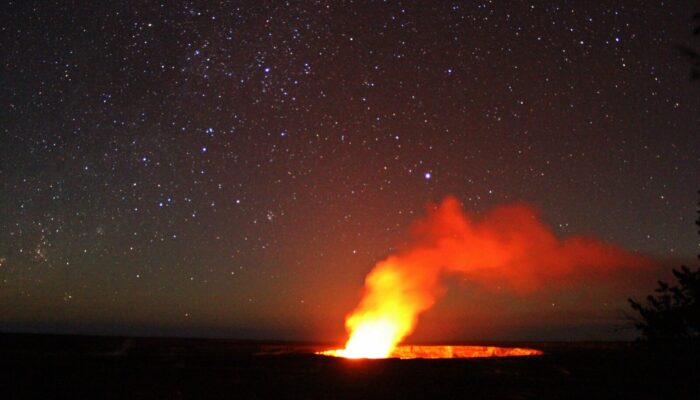
In my previous blog post, I wrote about the famous voyage of Professor Vening Meinesz aboard the submarine K-XVIII. At 30 meters underneath the surface, Vening Meinesz would observe the gravity field of Earth with a pendulum apparatus called the Golden Calf. In this post, I would like to discuss a different voyage the professor took part in. Normally the Dutch submarines took the Suez Canal to sail towards the East Indies, but during the voyage of the K-XIII in 1926, Vening Meinesz had persuaded the Dutch Navy to sail west towards the Americas. After crossing the Panama Canal, the K-XIII set sail to the Hawaiian Islands. There the professor observed something unexpected that would start a new theory in geophysics.
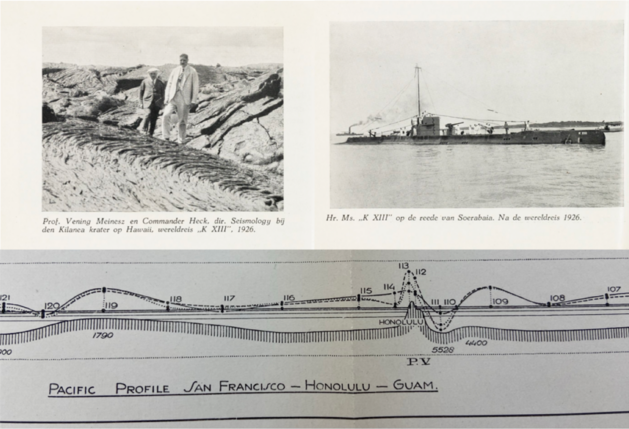
(top left) Prof. Vening Meinesz and Commander Heck, director Seismology at the Kilanea crate on Hawaii, World Tour “K-XIII”, 1926. (top right) The K-XIII on the waters neer Soerabaia, after the world tour of 1926 (images from the Book “100.000 zeemijl per onderzeeboot” by Albert Chambon). (bottom) A cross-section of the worldtour focused on the Hawaii part, depicting the bathymetry and gravity observations made by the professor. Lines depict the Hayford Isostatic reduction (dotted line), the Heiskanen Isostatic Reduction (dashed line), and the Regional Isostatic Reduction (solid line). The graph was taken from “Gravity Expeditions at Sea, 1923-1932, Vol. II” by Vening Meinesz, Umbgrove, and Kuenen.
On the 20th of September in 1926, the K-XIII arrived at Honolulu port. Vening Meinesz was invited to visit the Kilauea crater by commander Heck, director of Seismology. They discussed in length the geological setting of Hawaiian islands and Vening Meinesz gave lectures about his research. During the approach and departure of the islands, Vening Meinesz performed several observations of the gravity field and the ocean bed’s bathymetry. Years before (around 1850), researchers showed that there was a correlation between the topography and the gravity field which could be interpreted as crustal thickness variations (Airy isostasy) or density variations (Pratt isostasy). High topography seemed to be compensated by “negative” mass in the subsurface. For the Airy model, this is an increase in crustal thickness which will result in larger buoyancy forces due to the lighter density of the crust with respect to the mantle.
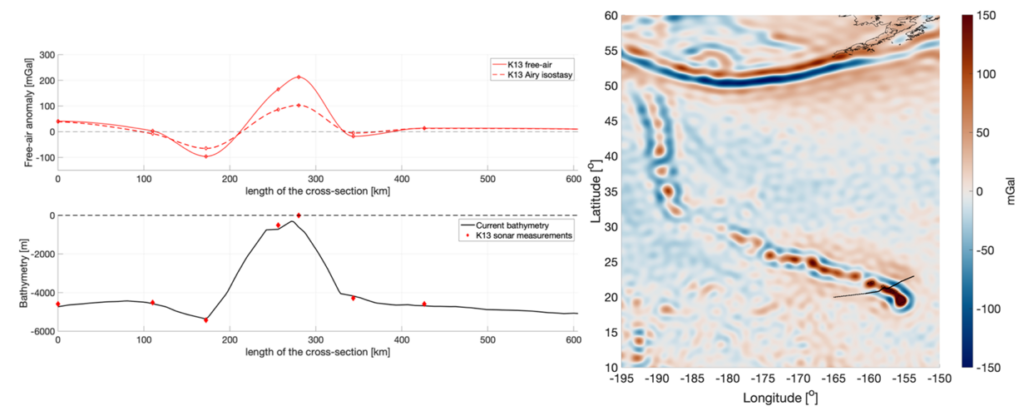
(left) a cross-section of the Honolulu part showing gravity and the local isostatic anomaly in red (solid, and dashed, respectively). Black line is the current known bathymetry (ETOPO) and red dots are the measurements done by the K-XIII. (right) A mapview of the gravity anomalies in the region (XGM2019).
Vening Meinesz knew this and applied the Airy-Heikanen theory to explain the volcanic gravity signal of Hawaii. However, this theory did not work. A better inspection of the gravity showed a negative gravity anomaly ring around the positive gravity of the volcanic islands, but the negative ring was not so pronounced in the bathymetry. This explained why the local isostatic model did not work. Vening Meinesz needed another model to explain the regional gravity observations. The now geophysicist was originally trained as a civil engineer. The many construction exercises of bridges could have given him the tools to see the crust as a plate that was loaded by the volcano and would bend. These flexure calculations would have been a walk in the park for our trained civil engineer. So, he approached the modelling with the following equation:

The flexural response function that was used to create the regional isostasy reduction in blue. The curve is almost completely zero, meaning that this model explains the gravity observations quite well.
This differential equation can be solved analytically when the crust is considered as an infinite extending plate. The flexure of the crust would results in regional compensation of the load explaining the negative gravity ring around the Hawaiian islands. The idea of Vening Meinesz would eventually grow to the well-known flexure modelling, a technique that is used on Earth and other rocky planets to understand the subsurface characteristics of the planet. It seems that this flexure theory would be perfect to explain the similar observations of the Martian volcanic effect. The observations are similar to Hawaii: a positive gravity anomaly centred above a volcanic region with a negative gravity anomaly around the area. Moreover, the antipodal positive gravity anomaly can also be seen in the Hawaiian islands where a (slightly less strong ) positive gravity anomaly is surrounding the negative band.
Did you enjoy hearing more about the adventurous field campaigns of Vening Meinesz? Let Bart know! We have a comment section under each blog post 🙂
edited by Öykü Koç and Marius Schlaak


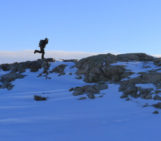
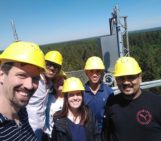
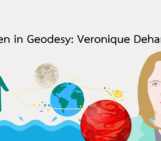
Carla
Hello, nice post, nice idea and nice pics. Can you add the details of the formula so it is more informative and the reference?